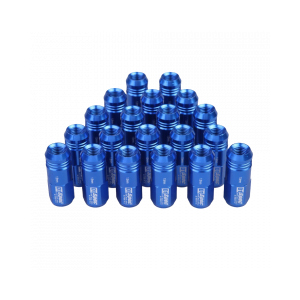Shaft Seals Selection Guide by Size
 Mechanical seals, on the other hand, are more complex and are selected based on the shaft diameter, face width, and the specific requirements of the application Mechanical seals, on the other hand, are more complex and are selected based on the shaft diameter, face width, and the specific requirements of the application
Mechanical seals, on the other hand, are more complex and are selected based on the shaft diameter, face width, and the specific requirements of the application Mechanical seals, on the other hand, are more complex and are selected based on the shaft diameter, face width, and the specific requirements of the application shaft seals by size.
When it comes to larger-sized shaft seals, often used in heavy-duty industrial machinery, materials like carbon graphite, metal, or elastomers are commonly employed due to their durability and resistance to high temperatures and pressures. Conversely, smaller seals, found in automotive or domestic appliances, may use softer materials such as rubber or silicone for better sealing properties at lower pressures.
Size is not the only factor to consider when choosing a shaft seal. Other critical aspects include the type of fluid being sealed, the operating speed, and the environmental conditions. For instance, seals in corrosive environments may require corrosion-resistant materials, while high-speed applications might necessitate low-friction materials to prevent excessive heat generation.
In conclusion, selecting the correct shaft seal by size is a critical aspect of maintaining the integrity and efficiency of any mechanical system. It requires a comprehensive understanding of the application's specifications, the seal's material properties, and its operating conditions. Proper sizing ensures reliable performance, minimizes maintenance needs, and prolongs the life of both the seal and the machinery it protects. Always consult with industry experts or manufacturers for guidance to ensure you make the best choice for your unique application.
shaft seals by size.
When it comes to larger-sized shaft seals, often used in heavy-duty industrial machinery, materials like carbon graphite, metal, or elastomers are commonly employed due to their durability and resistance to high temperatures and pressures. Conversely, smaller seals, found in automotive or domestic appliances, may use softer materials such as rubber or silicone for better sealing properties at lower pressures.
Size is not the only factor to consider when choosing a shaft seal. Other critical aspects include the type of fluid being sealed, the operating speed, and the environmental conditions. For instance, seals in corrosive environments may require corrosion-resistant materials, while high-speed applications might necessitate low-friction materials to prevent excessive heat generation.
In conclusion, selecting the correct shaft seal by size is a critical aspect of maintaining the integrity and efficiency of any mechanical system. It requires a comprehensive understanding of the application's specifications, the seal's material properties, and its operating conditions. Proper sizing ensures reliable performance, minimizes maintenance needs, and prolongs the life of both the seal and the machinery it protects. Always consult with industry experts or manufacturers for guidance to ensure you make the best choice for your unique application. -
Understanding the Importance of the Crankshaft Oil Seal in Engine Performance
News Jun.16,2025
-
The Unsung Heroes of Engine Protection: Understanding Automotive Shaft Seals and Oil Seals
News Jun.16,2025
-
Keeping the Engine Tight: The Role of Crankshaft Seals and Gaskets in Oil Control
News Jun.16,2025
-
Complete Protection in Harsh Conditions: A Deep Dive into Cassette Seals
News Jun.16,2025
-
Choosing the Right Oil Seal: A Guide to Trusted Brands and Suppliers
News Jun.16,2025
-
Advanced Sealing Technologies: Exploring the Range of Modern Oil Seals
News Jun.16,2025
-
Your Essential Guide to Car Repair Kits: From Rust to Dings
News Jun.13,2025
Products categories















